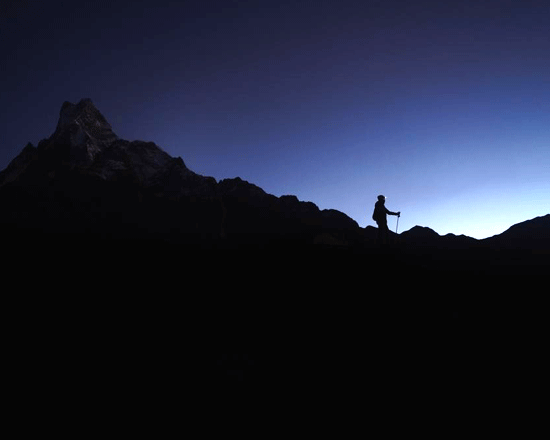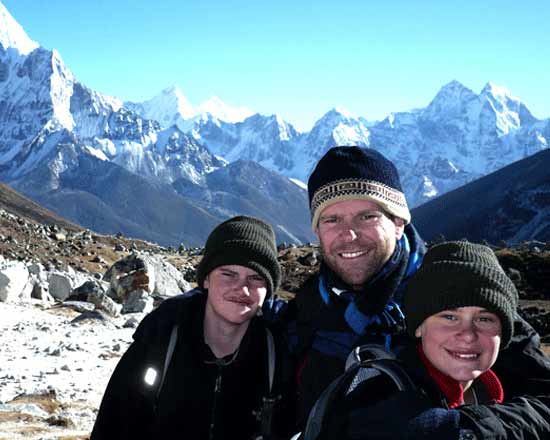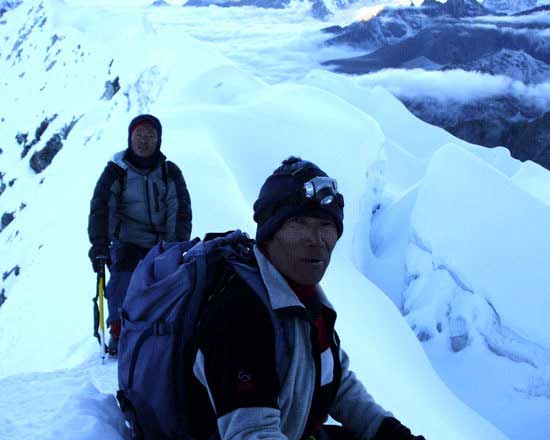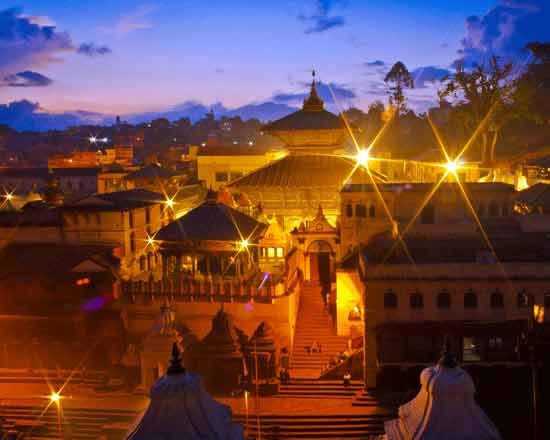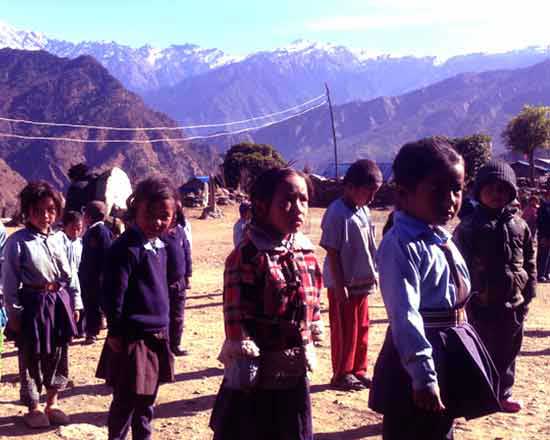Nepal

Where is Nepal located?
Where is Nepal? This stunning country sits in South Asia, nestled between China’s Tibet region to the north and India to the south, east, and west. Where is Nepal located on a world map? It is a landlocked nation slightly larger than Arkansas, positioned in the heart of the Himalayas. Nepal is the country with the highest mountain in the world “Mount Everest”, which includes the stunning Himalayan mountains and high hills. The country is decorated with monasteries, chorten, temples, prayer flags, prayer wheels, many, stupas, and others, etc. Nepal, the country well known as the birthplace of Siddhartha Gautam Buddha in Lumbini has captured the eye of Asian interest in Buddhism. The country has the living god “Kumari”. The land is blessed with a variety of religions, cultures, traditions, and ethnic groups uniting and respecting one another. The country is known as the peace-loving nation in the world. Nepal features an extraordinary landscape and consists highest lake, the highest peak, the deepest lake, the highest valley, the deepest gorge, and many more
Nepal is a landlocked country located in South Asia, ranging from the lowland Terai plains to the towering peaks of the Himalayas. Nepal features an extraordinary landscape and consists highest lake, highest peak, deepest lake, highest valley, deepest gorge, and many more. Nepal is well known for being rich in natural resources. It is second in the world in terms of water resources and twenty-fifth in biodiversity, with 118 ecosystems, 75 vegetation types, and 35 forest types.
The capital city of Nepal is Kathmandu. It is a big question for those in Western countries who are unfamiliar with Nepal, On a world map. Nepal is a sovereign independent nation, with the highest peak, Mount Everest, China’s Tibet in the north, India’s Himalayas in the south, Mechi in the east, and Mahakali in the west, a small county. It is slightly larger than the state of Arkansas.
There is no doubt that Nepal is a paradise for Trekkers and is full of breathtaking Himalayan landscapes. In addition, one can also witness how the Nepalese people are kind and accepting, and embrace diversity in such a positive manner. In addition, it is also a land of ancient golden temples such as Pashupatinath Temple, Manakamana Temple, and Dantakali Temple. However, it is the Land of Diversity with over 125 ethnic groups celebrating their colorful festivals as part of its multicultural heritage.
PEOPLE & CULTURE
Hinduism is the religion most people practice, but some people practice both Hinduism and Buddhism. Even though the caste system has been outlawed by the government, it still exists in society. There are four main ethnic groups in Nepal: Hindus, Bhotes, hill tribes, and Newars. The Hindus originally came from India and continue to follow the caste system. Hill people include the Sherpas and other tribes. Known for guiding tourists on high-altitude climbs, Sherpas are born high in the mountains at elevations above 12,000 feet (3,658 meters). Visitors learn about Sherpa culture and Buddhism’s love of the land from them. Originally from Tibet, the Bhotes live in the mountains of the north. Kathmandu Valley’s original inhabitants are the Newar.
The majority of Nepalese live in the central, hilly region, which encompasses the Kathmandu Valley, and the Terai plains in the south. This area is flooded by the Ganges River and is very fertile for growing crops. 10-% live in mountains over 10,000 feet (3,048 meters) and are traders, farmers, and herders.
NATURE OF NEPAL
Nepal is a country with a diverse and unique natural environment due to its location in the Himalayas. The country’s geography includes mountains, hills, valleys, and plains, providing a range of ecosystems and habitats for various flora and fauna.
The Himalayan range in Nepal is home to some of the world’s highest peaks, including Mount Everest, and several other eight-thousanders. The region is characterized by snow-capped mountains, glaciers, and high-altitude lakes. The southern part of Nepal called the Terai, is a flat, fertile plain that borders India and is covered with dense forests, grasslands, and wetlands.
Nepal has a rich variety of plant and animal species, including over 6,000 flowering plants and 848 species of birds. The country is home to several rare and endangered animals, such as the Bengal tiger, one-horned rhinoceros, snow leopard, red panda, and clouded leopard.
Nepal’s natural beauty and biodiversity attract many tourists every year, who come to enjoy activities such as trekking, mountaineering, wildlife safari, and river rafting. The country’s government has taken several steps to protect and conserve its natural resources, including establishing national parks and conservation areas.
Most of Nepal’s energy needs are met by trees. To heat and cook, forests are rapidly being cut down and used as firewood. When the trees are removed, the land becomes fragile and erodes.
As a result of population growth and deforestation, animal species are also becoming extinct. A Bengal tiger, an Asian one-horned rhinoceros, a snow leopard, and a Ganges freshwater dolphin are all endangered species. Nepal’s economy depends on protecting these animals from extinction because so many tourists come to see the exotic wildlife.
It is believed that the yeti (or Abominable Snowman) lives in the mountains of Nepal. Many explorers claim to have seen yeti footprints, but there is no conclusive evidence that yetis exist. It has never been found, so the mystery continues.
Nepal’s Top Sights:
- Boudhanath Stupa
- Swayambhunath Stupa
- Maya Devi Temple
- World Peace Pagoda
- Cambodian Monastery
- Royal Thai Buddhist Monastery
- Zhong Hua Chinese Buddhists Monastery
- Hanuman Dhoka
- Pashupatinath Hindu Temple
- Patan and Bhaktapur medieval towns
- Changu Narayan Temple
- Durbar Square
- Kathmandu Valley
- Lumbini, the Birthplace of the Lord Buddha
- Chitwan National Park
- Sagarmatha National Park.
Where is Nepal located with natural wonders? The country is home to eight of the fourteen highest peaks in the world exceeding 8,000 meters, including:
- Everest Mount (8848m)
- Kanchenjunga Mount(8586m)
- Lhotse Mount(8511m)
- Makalu Mount(8462m)
- Cho Oyu Mount(8201m)
- Dhaulagiri Mount(8167m)
- Manaslu Mount(8163m)
- Annapurna Mount(8091m)
Understanding where is Nepal located helps travelers appreciate its diverse offerings, from trekking the Himalayas to visiting UNESCO World Heritage Sites like Kathmandu Valley, Lumbini, Chitwan National Park, and Sagarmatha National Park.
For adventurers wondering where is Nepal located for recreational activities, the country offers biking over mountains, paragliding over Pokhara, zip-lining, and bungee jumping. For those seeking peace, Nepal provides the perfect setting for relaxation and rejuvenation.


